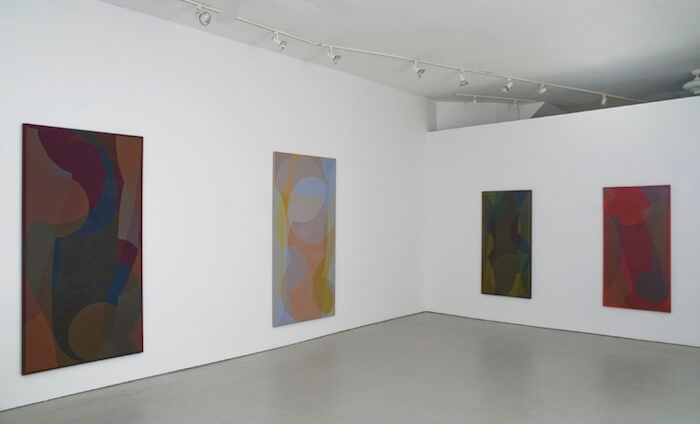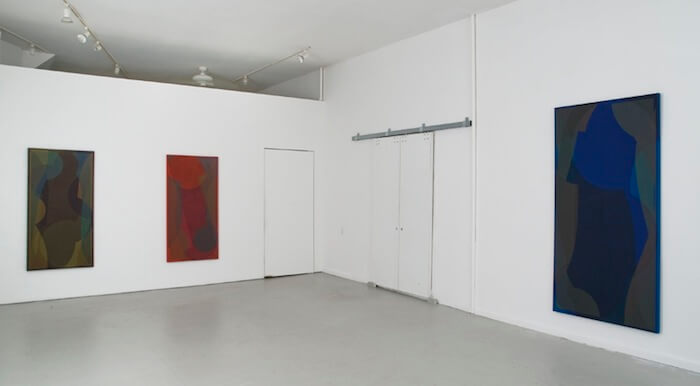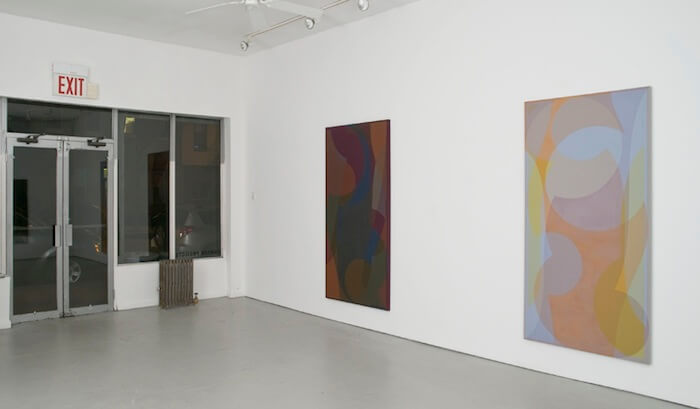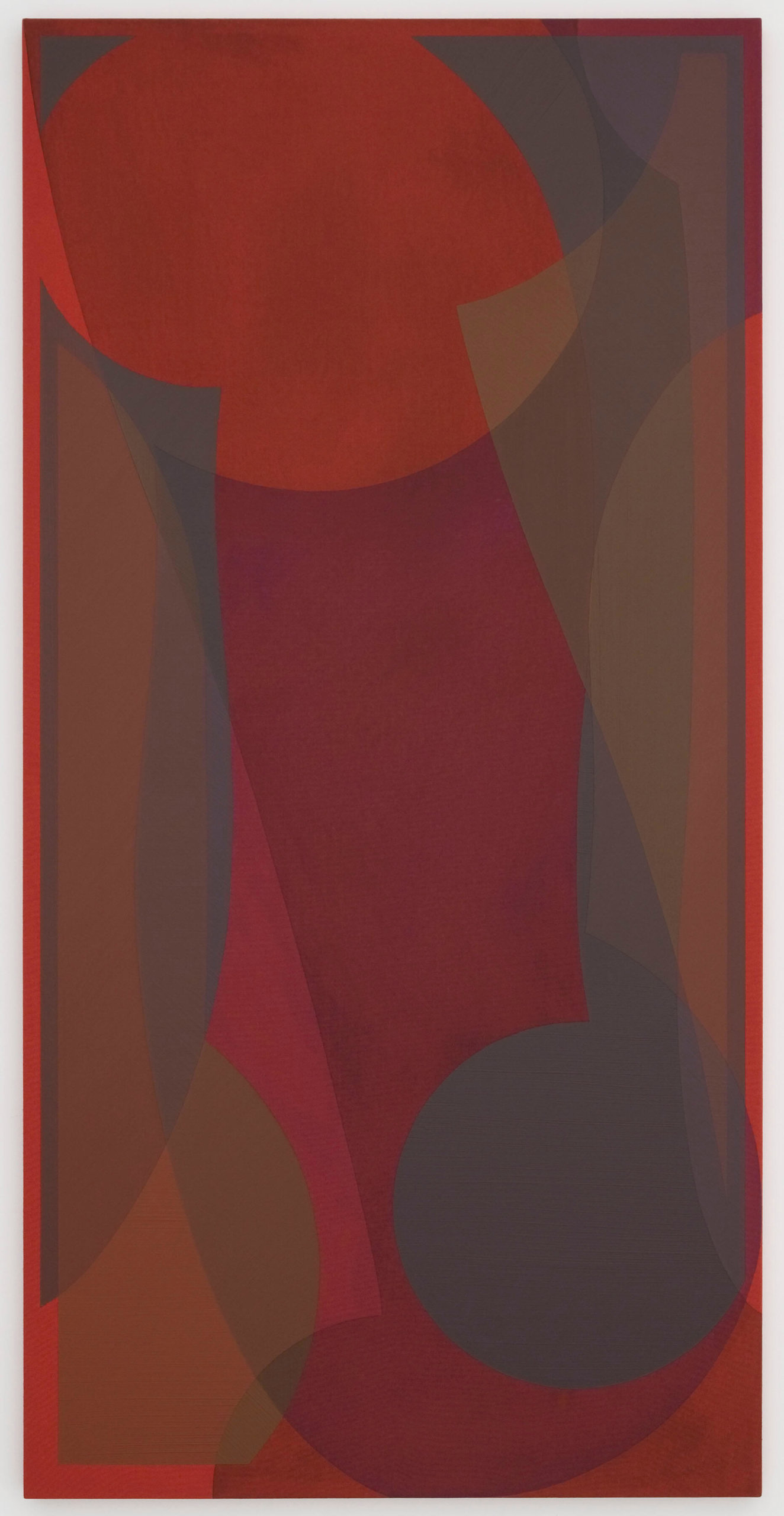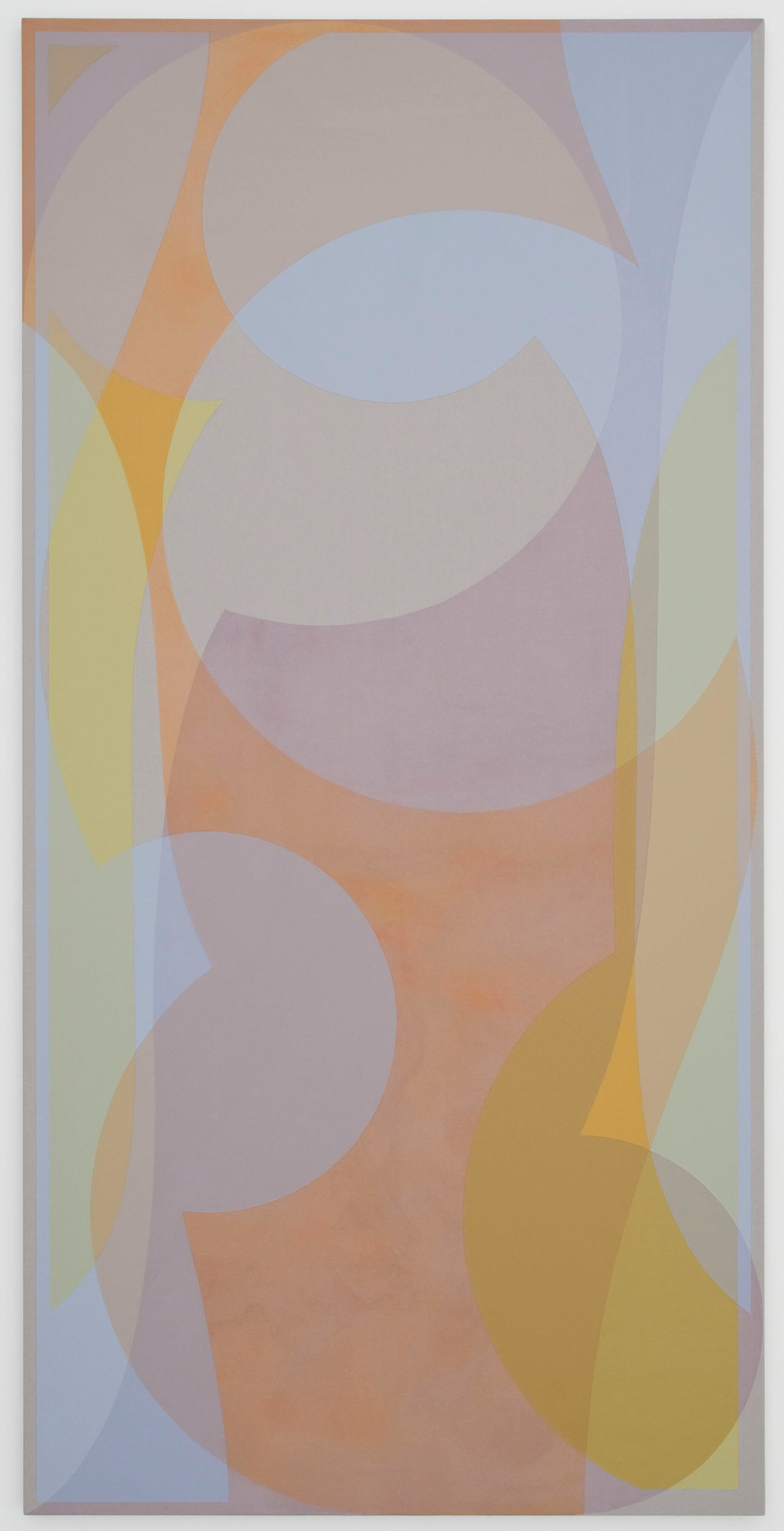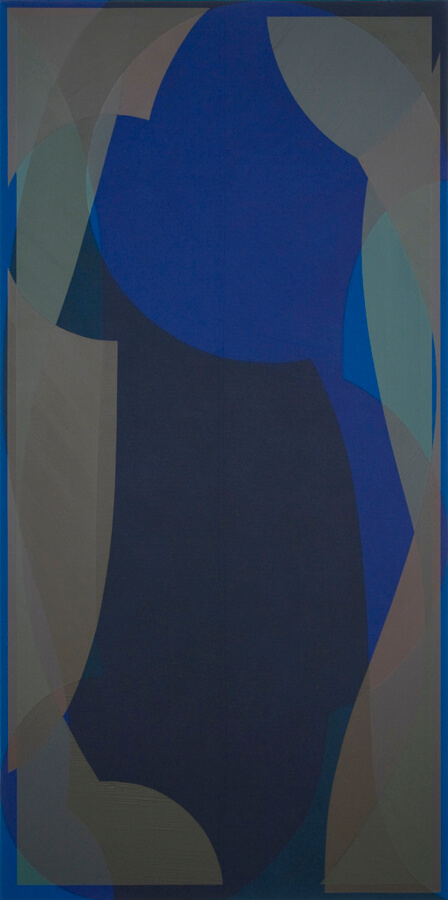An exhibition of new paintings by Halsey Hathaway is on view at Rawson Projects, Brooklyn, New York, from April 6 – May 19, 2013. The gallery conducted an interview with the artist on the occasion of the exhibition and has graciously allowed Painters’ Table to post the conversation below.
Rawson Projects (RP): First, can you discuss how the paintings are constructed? What I find particularly interesting about them is that they are made in layers over a dyed canvas. Each layer reveals the one beneath it. What appeals to you about this method versus a more traditional painterly approach?
Halsey Hathaway (HH): The paintings always start with plans for how I will execute them. The forms are predetermined, and the color in its own way as well. The paintings in the show are all constructed with four layers on top of a dyed canvas, two stained and two thickly painted opaque layers. For each layer, the painting is completely masked off and I draw, cut out, and paint in the form for that specific layer. That being said, I never have a clear idea of how the painting will look once finished. The specifics of the painting, how the form and color interact, play out in the process and reveal themselves only when everything is completed.
RP: Color is obviously very important to your work. A lot of artists have been fascinated with color throughout various periods in history. What draws you to experiment with color, and do you think how artists relate to color has changed over time?
HH: The space and light that color creates in painting is, I feel, the strongest reason that painting was the earliest art form and is still relevant today. With the computer monitor being our main focus in the past fifteen years or so, our experiences of color has changed dramatically. The majority of our visual encounters involve colored light being projected at our retina. Surely this has and will continue to change our experience of color and will affect how I go about using color.
RP: The paintings often give the impression– in some more than others– of a figure or apparition of a figure? Is this intentional? If so, what interests you about this response from the viewer?
HH: I want to address the unique oscillating spaces that painting can inhabit and how that interacts with our subconscious. The accumulated forms build up to a space that can be seen both as figure and as void, intentionally allowing the work to change with each viewer’s own subjectivity. I felt the need to approach painting from a more Epicurean position, where our senses provide us with the only truths. As our senses are unique to our selves, and our subconscious response is often evolving, it is inherent that there will be multiple and contradictory truths.
RP: Finally, the paintings are hung rather low to the ground, and each canvas employs a 2:1 scale. What role does the scale play in the layout of the works? In other words, does the scale somehow precipitate the composition? Does the scale and relationship to the space reference any specific historical practice in painting?
HH: I chose the 2:1 ratio for its strong verticality and its figurative presence. I wanted the scale to relate to our real physical being. I needed the paintings to exist, not just as things to look at, with space we could imagine easily passing our bodies through, but as an entities we need to navigate ourselves around.
An exhibition of new paintings by Halsey Hathaway continues at Rawson Projects, Brooklyn, New York, through May 19, 2013.
